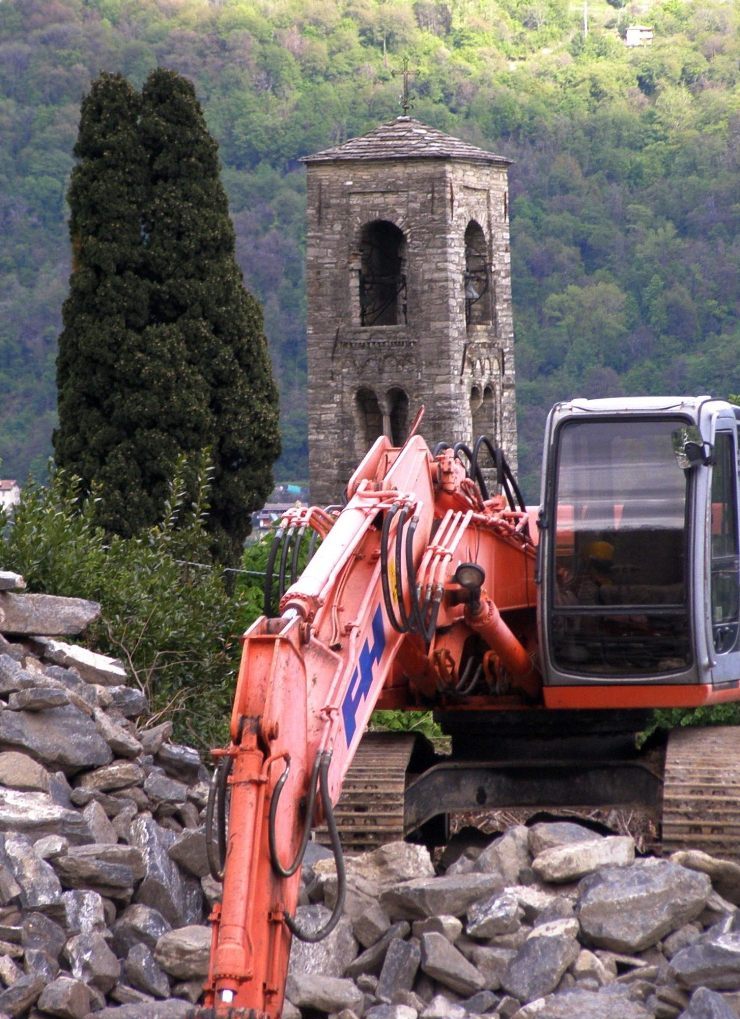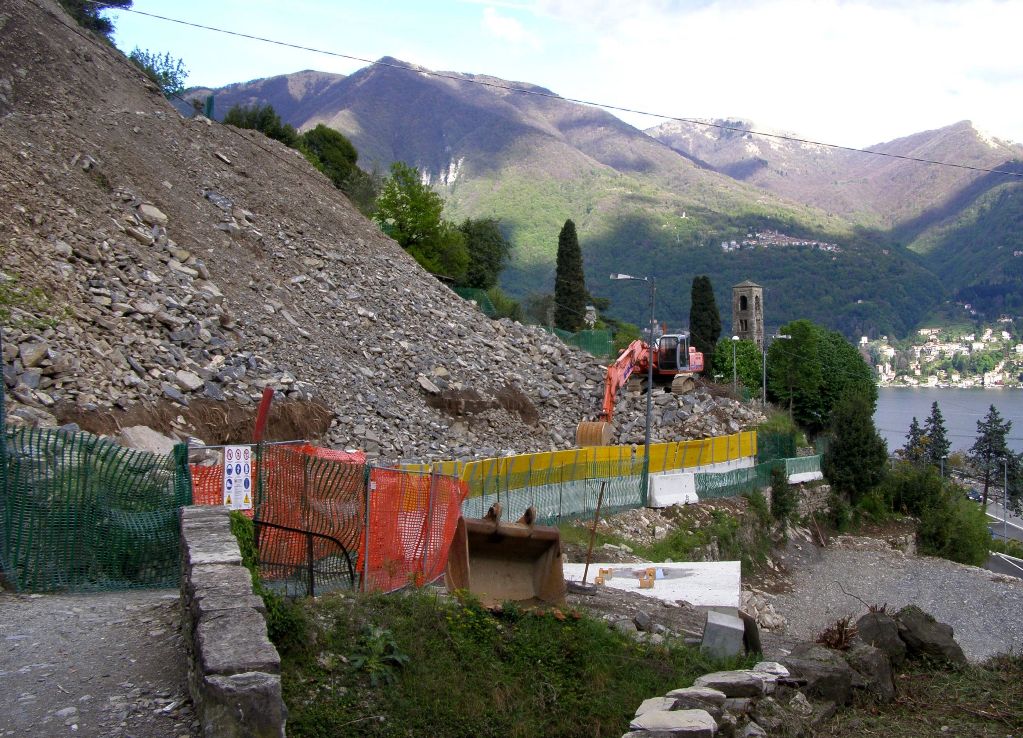|
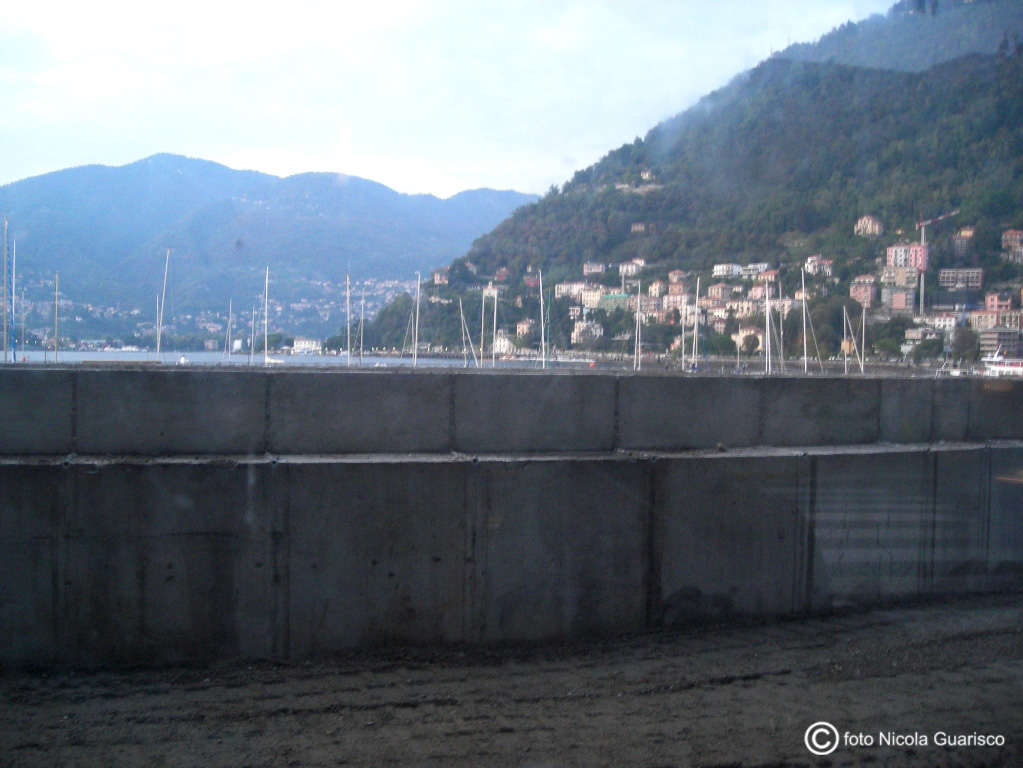 |
2) In Como, the useless anti-flooding bulkheads were not realized in the interest of the city and stand as a witness of the worst administration Como has ever had. The famous "wall" that limited the view of the landscape was torn down thank to the protests of many people; it was just the tip of the iceberg of an ill-planned project of which the execution turned out even worse with an endless series of assessment errors and a huge waste of public money.
They say this colossal worksite will be completed within 2021! |
|
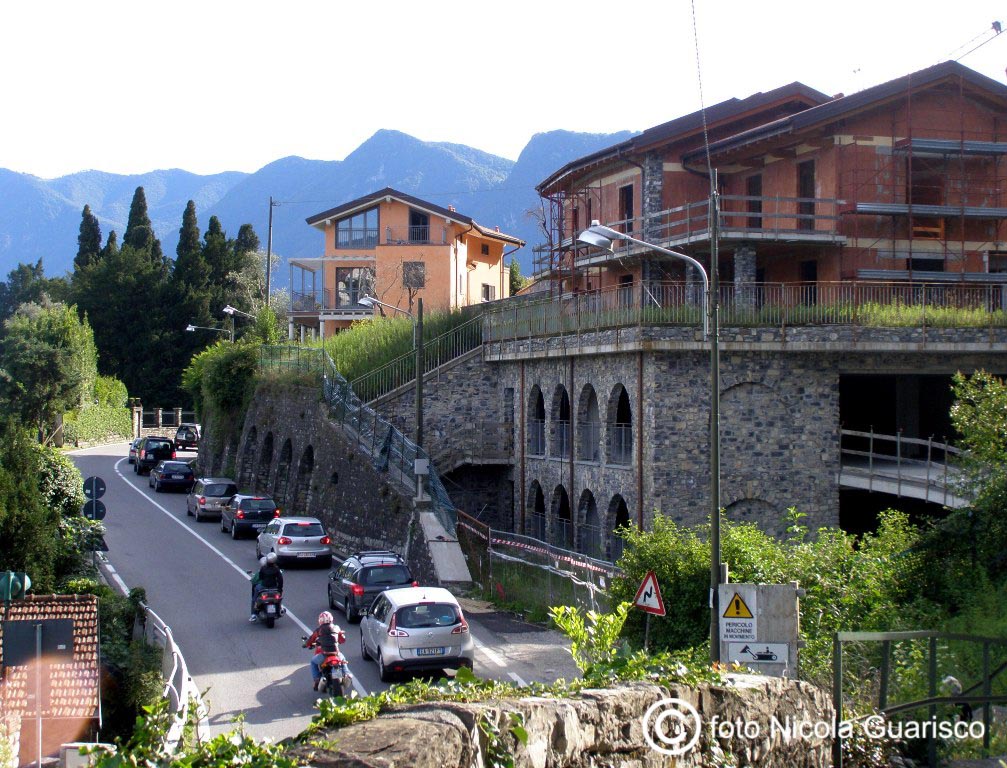 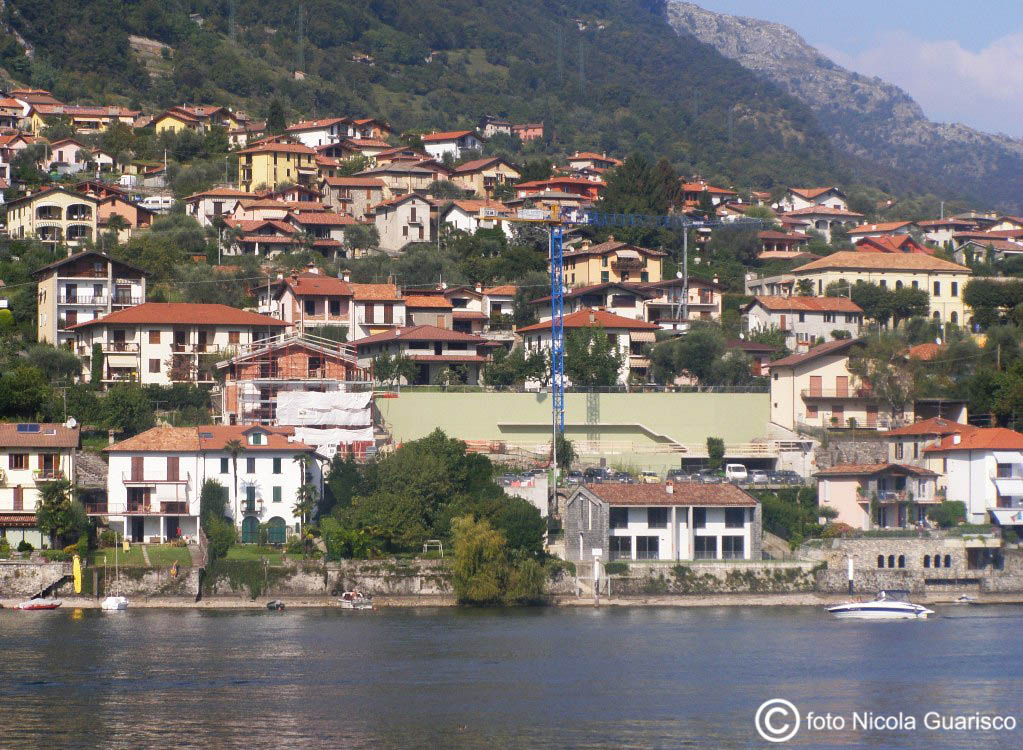 |
3) When viewed from the Comacina Island, the Zoca de l'oli (basin of oil) looks like a building site. The municipalities of Sala and Ossuccio have given authorization to the opening of new construction sites that clash with the beauty of this side of the lake, far too much developed, and inscribed on the UNESCO list of "World Heritage Sites", amongst other things. The photo below is a clear witness of the fact that urban density has reached its maximum level of sustainability. Should further development projects be carried out in Ossuccio, they will surely cause the destruction of the magic atmosphere of the Lario; such criminal action would corroborate still further the culture of a nation that is record-holder in Europe for overbuilding. |
|
|
|
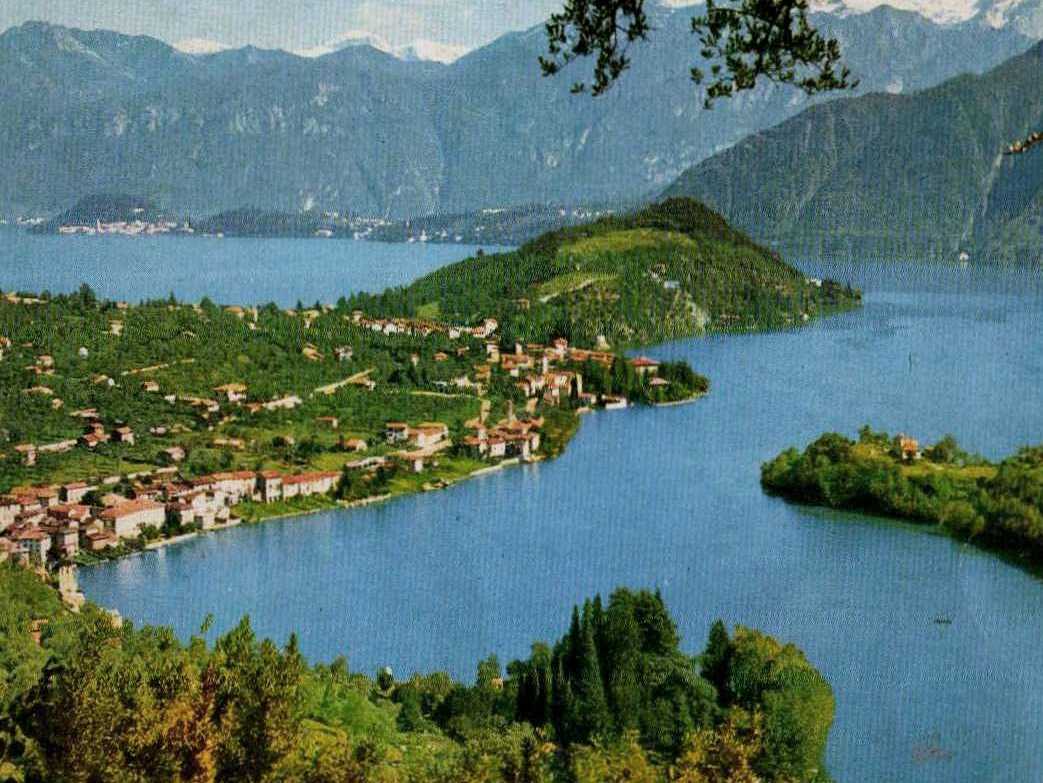 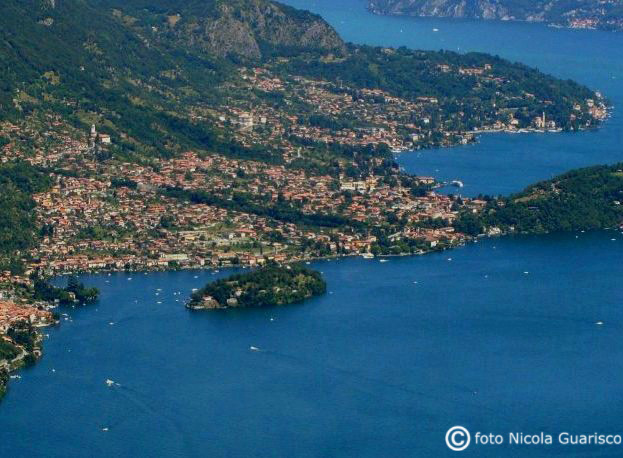 |
4) These photos show the serious damages suffered by the Zoca de l’oli, which once owed its beauty to the olive groves and trees that extended down to the shore. In the photo above, the landscape in 1960. Below: the landscape today. |
|
|
|
|
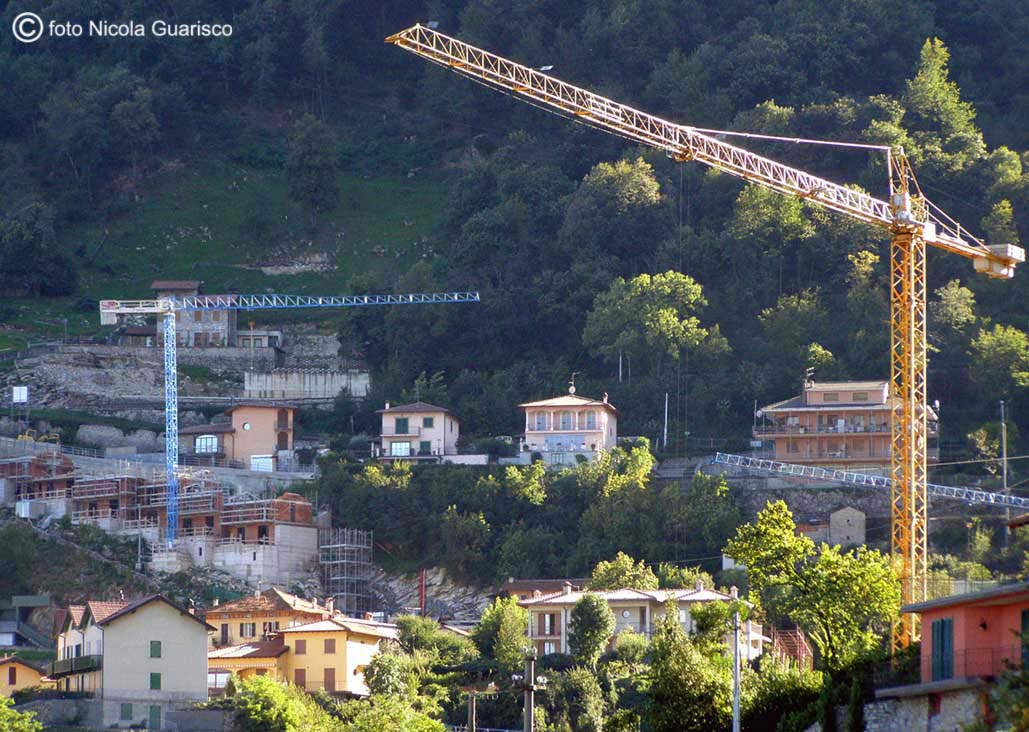 |
5) The view over the upper part of Argegno and Colonno is literally devastated by at least a dozen cranes. |
|
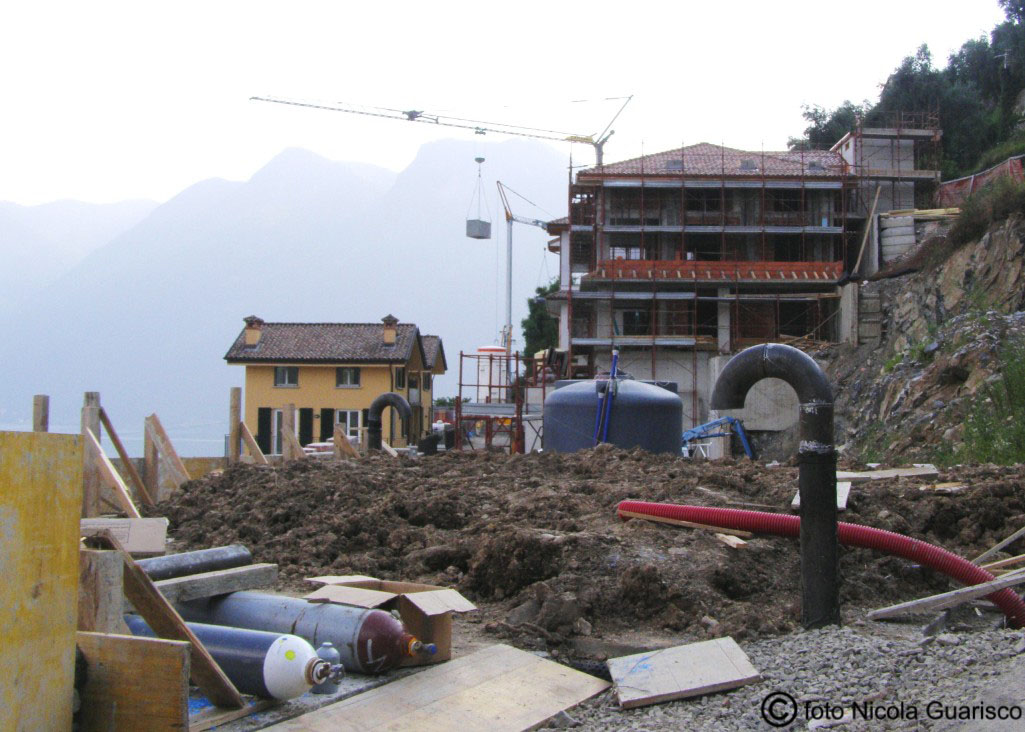 |
|
|
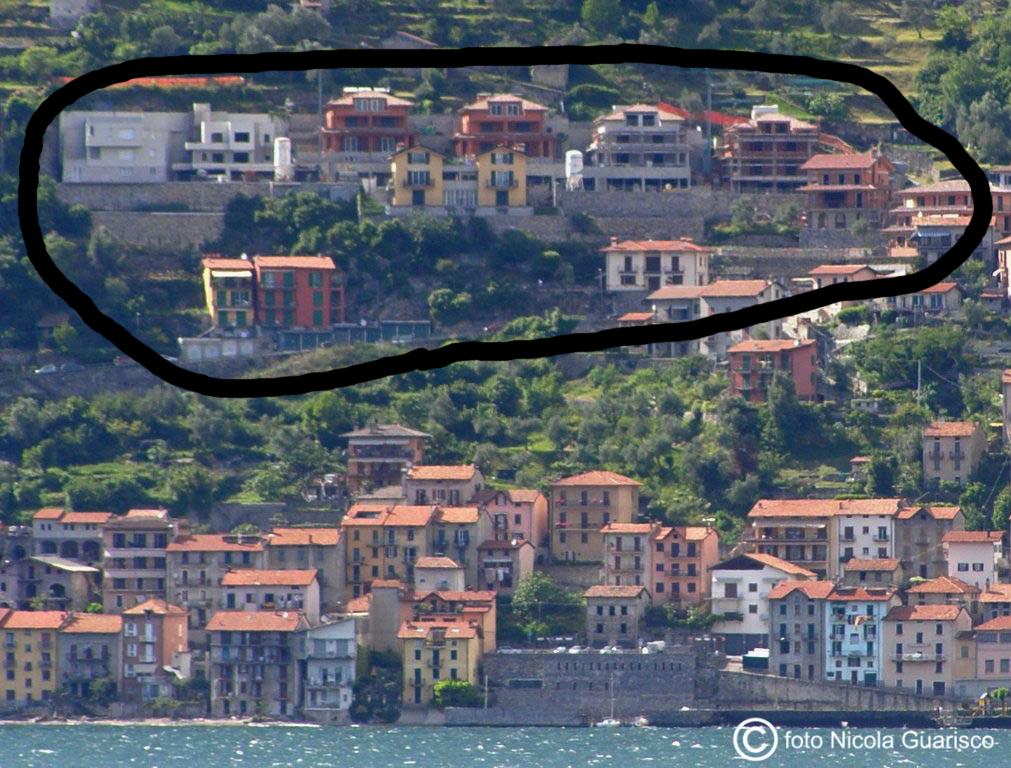 |
6) Upper Colonno, where the trail towards the alp starts out. A helter-skelter complex of buildings has sprung up and is justified by the fact that the area has not been cultivated for centuries. The new edifices (always supposing that they do not remain empty) imply greater consumption and increase in the volume of traffic, which was already bad enough. In Val d’Intelvi, the mayor of Lanzo had to suspend the water supply to the nearby town of Ramponio, who was ready to grant new building licences. And do you know why? Because the aqueduct (obviously) would not be able to satisfy any further demand for water that would have derived from such initiative.
In the photo below, the "Colonno’s monsters" have separated the village below from its mountain. |
|
|
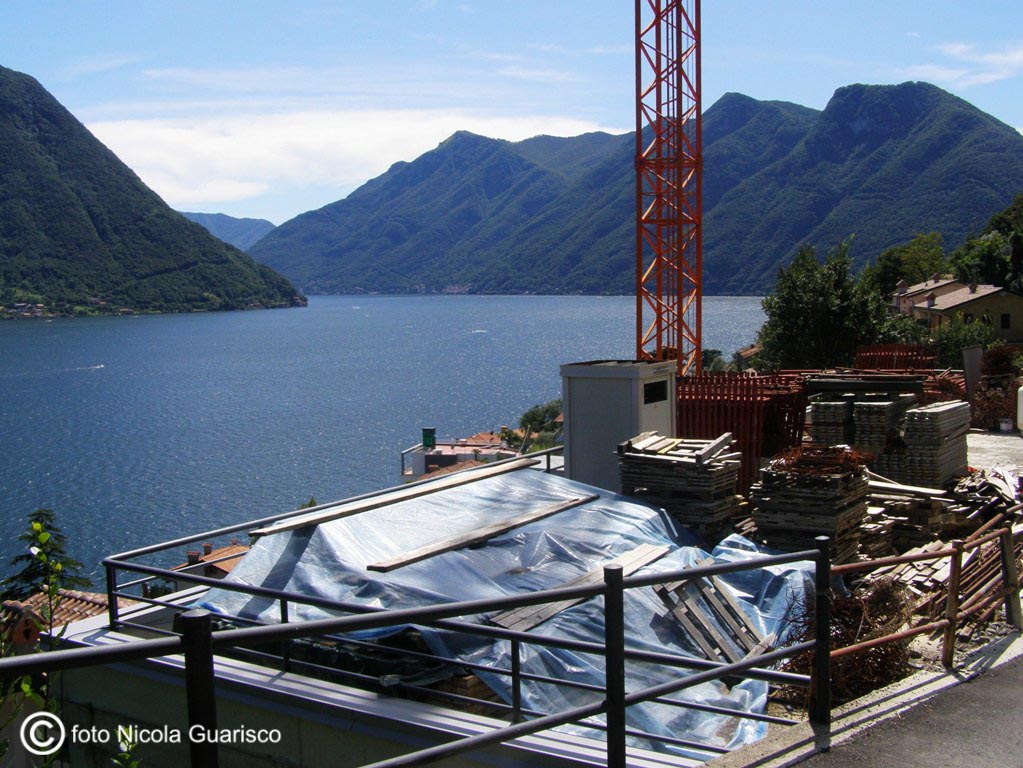 |
7) The Greenway of the lake was realized to offer the opportunity to enjoy nature walks from Colonno to Lenno, but along the way, as usual, various building sites have sprung up like mushrooms. In Sala Comacina, thirty meters of the ancient Roman road was destroyed in 2010 to allow the passage of bulldozers for the construction of a complex with a building index of one cubic meter per square meter. |
|
|
|
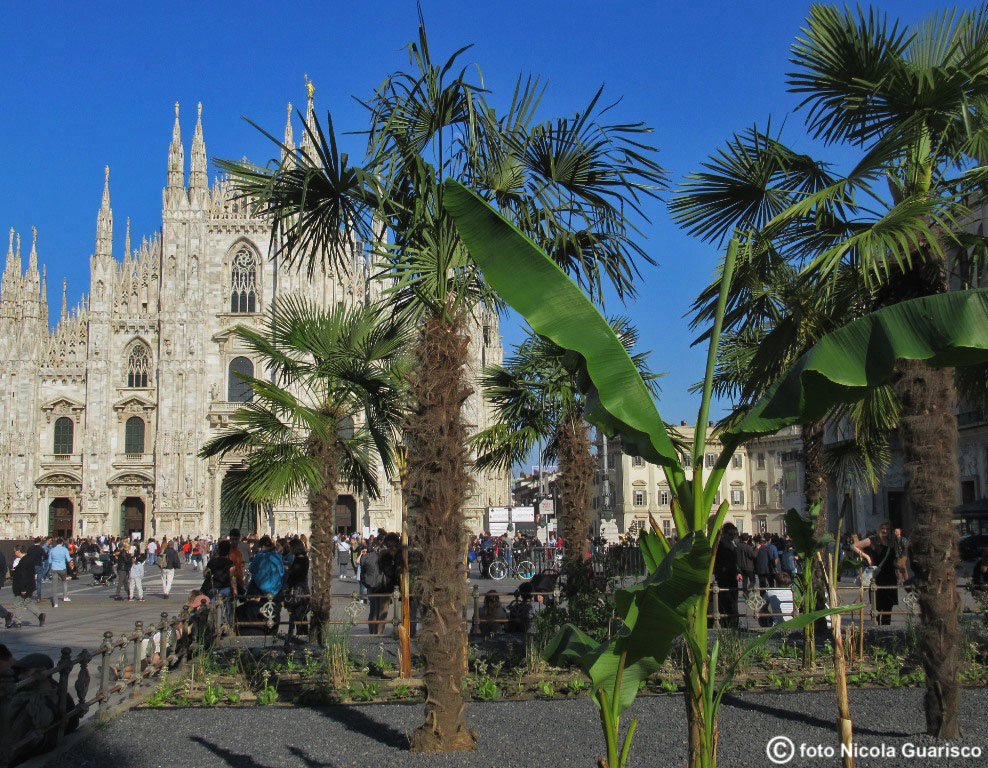 |
8) Milan: palms and tropical banana trees, in front of the gothic Cathedral! A symbol of the worst globalization. |
|
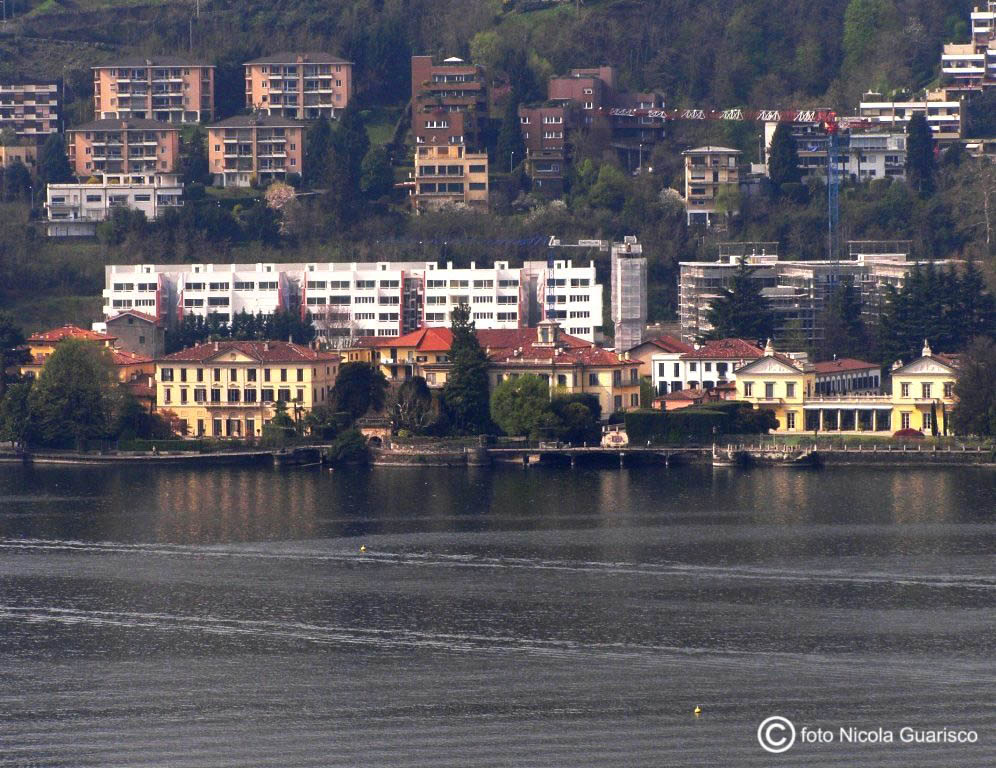 |
9) The huge white building of the Borgovico (Como). The City Council, the commissioner and the graduated engineers have succeeded in destroying the landscape behind the walk of Villa Olmo. The neo-classical villas by the lake have been literally "crushed" by the bulk of the building. |
|
|
|
|
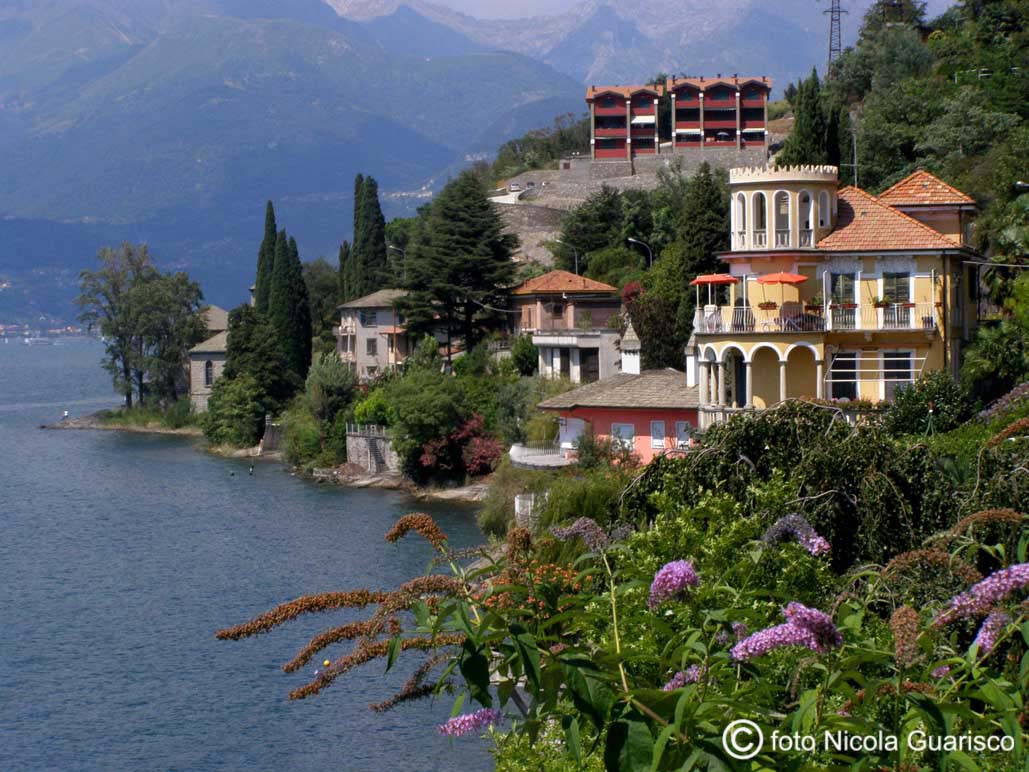 |
10) This photo is emblematic: the new building erected between Dervio and Corenno Plinio, a hideous little ''eco-monster'' that truly deserves to be ranked in my Horror Gallery (the picture below shows the same landscape before this eyesore was built).
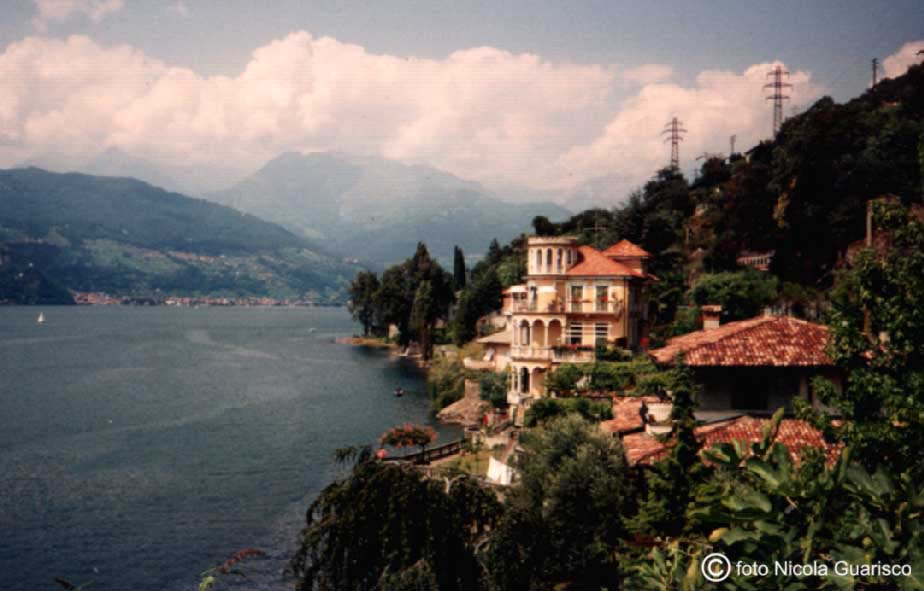 |
|
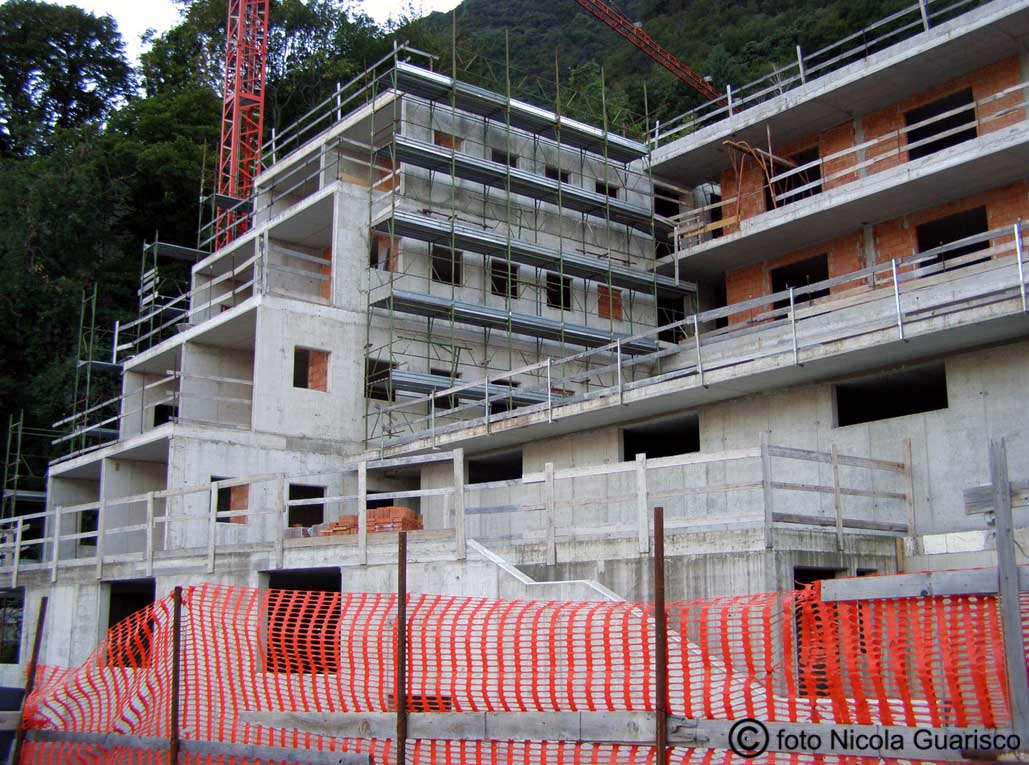 |
11) Even Brienno wanted an "eco-monster" of its own: a residential area for Russian tourists, with annexed three-storey car park, wellness centre and mini-funicular railway. The works were stopped several months ago due to volume irregularities, and since then, the building has been left standing in these admirable conditions. |
|
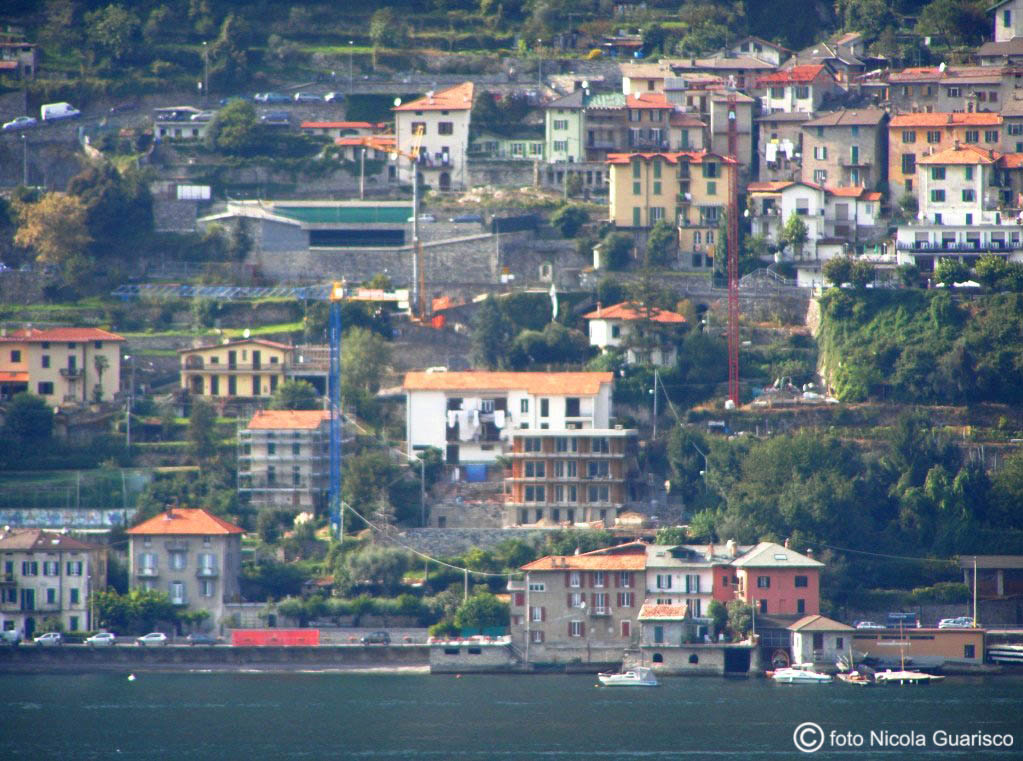 |
12) Laglio. George Clooney in person manifested his objection to the project for the construction of multi-storey car parks with elevators and hundreds of boat parking spaces, which would inevitably disrupt the harmonious lakefront landscape. To this end, a Citizens Committee for the salvation of the Laglio shores named Comitato Rive di Laglio was established. It was also signed by Clooney. Thank goodness, the mega-project (for a town that counts only 900 inhabitants) has been put aside. |
|
|
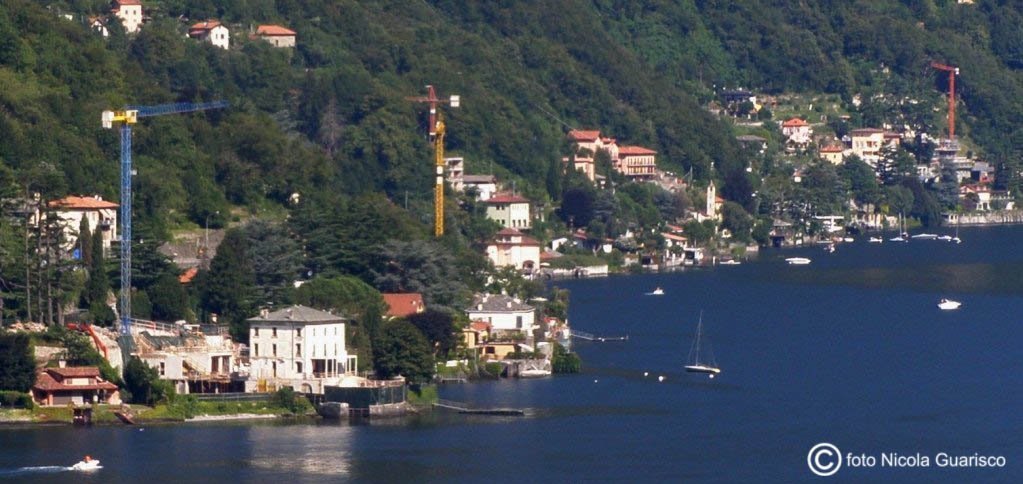 |
13) In 2011, the shores of Laglio in Brienno seem to be dotted by cranes. That blue was used to build the new villa of a Russian Tycoon. That yellow was used to erect the usual residence in place of the old naval shipyard which testified of the Larian working-class tradition. Further down, there is yet another settlement at the mouth of the Brienno tunnel. |
|
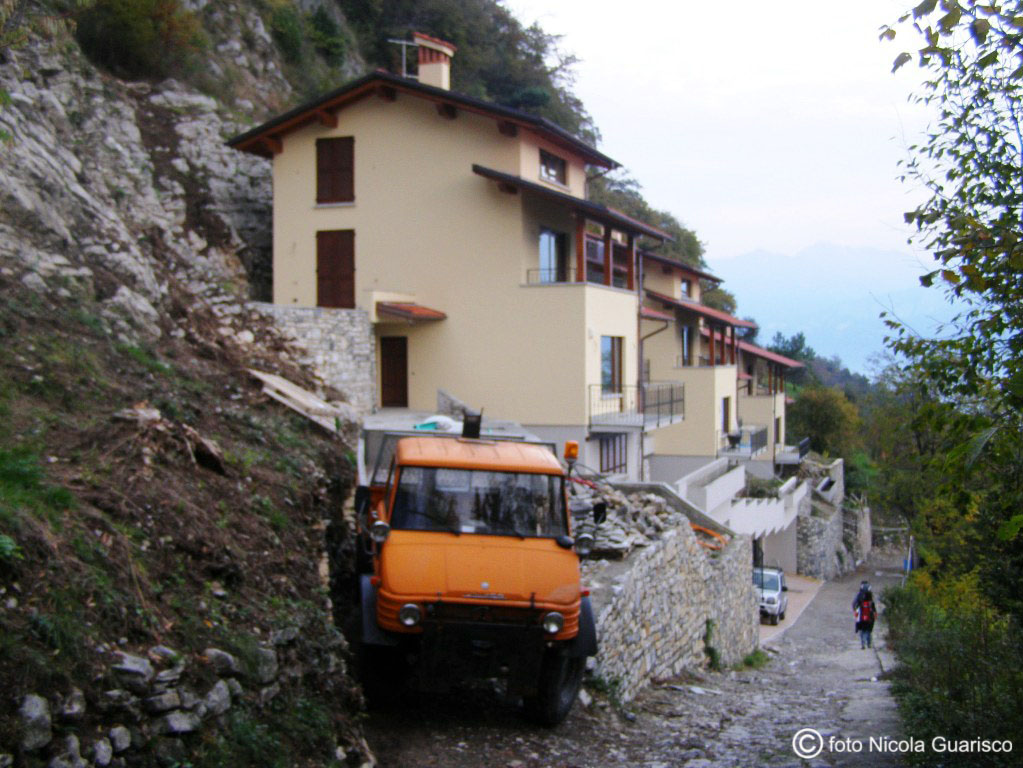 |
14) A new "eco-monster" dominates the area where the path to S. Benedetto - that winds along the Sacred Mountain of Ossuccio - starts out. Surely we needed that, didn’t we? |
|
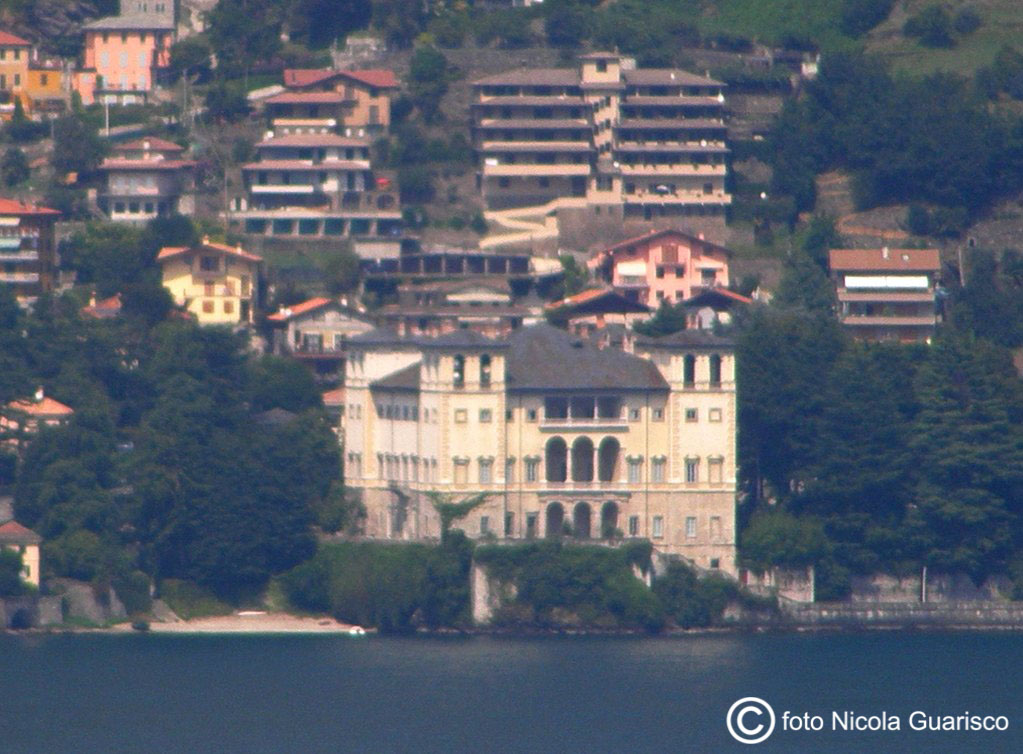 |
15) Gravedona. Behind Palazzo Gallio, skeletons that have sprung up from nowhere.
I must say they definitely do justice to the designers... |
|
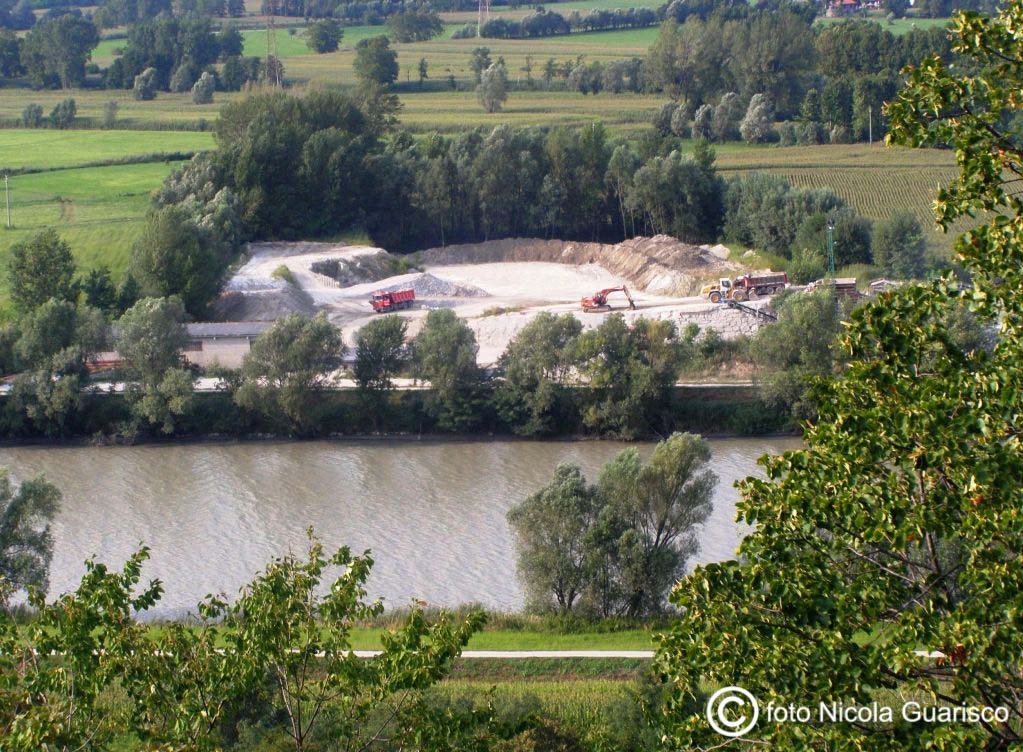 |
16) The cancer of irrational town planning does not even spare Colico, located at the lake far end in the natural oasis of Pian di Spagna.
Here is a magnificent ear-splitting building site along the Adda. |
|
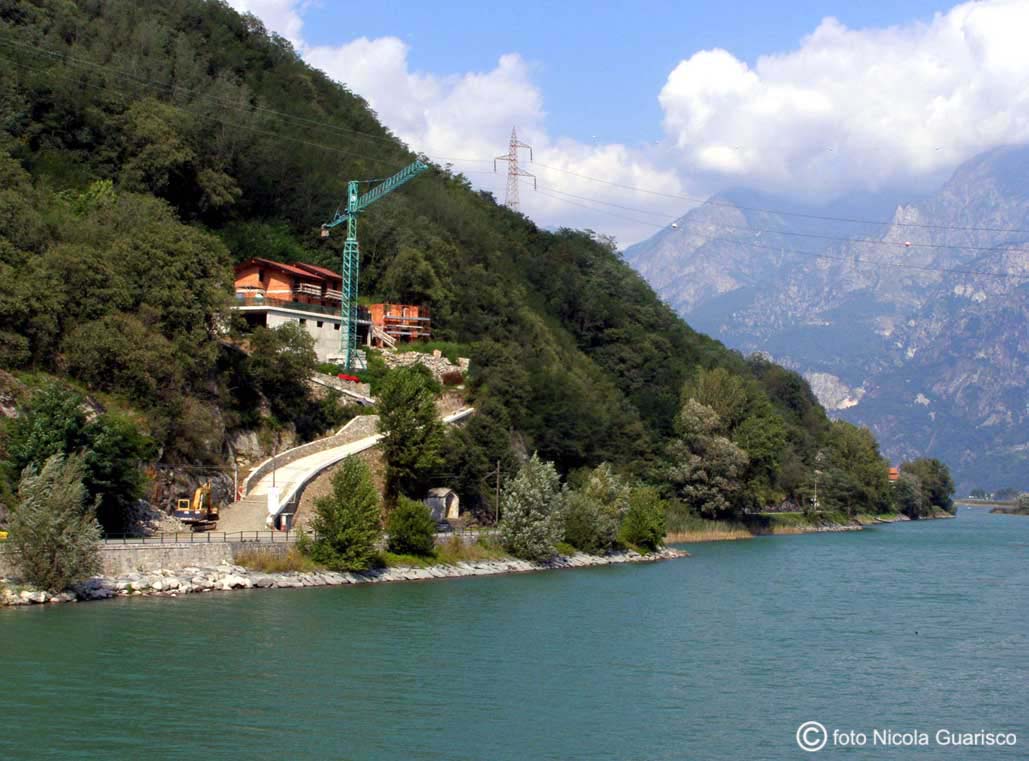 |
17) Sorico, located at the upper part of the lake. A strip of concrete that runs along the shores
of the Mera. |
|
|
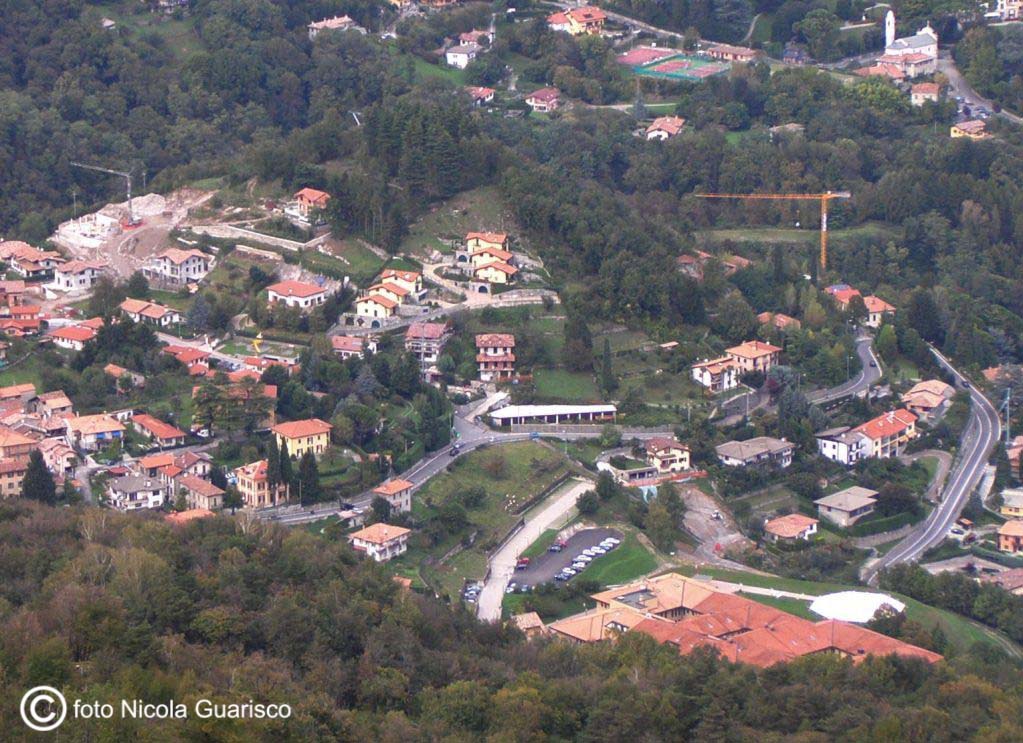 |
18) Demolition of the Nanch woods authorized by the municipality of Menaggio during the 90s with the purpose of triplicating, without reason, the number of inhabitants. The zoning of the area contemplated about 34.000 cubic metres of concrete for building a hundred detached houses, which were obviously not intended for the young couples of Menaggio, but rather, élite tourists for a few months a year (provided that the flats shall not remain vacant). |
|
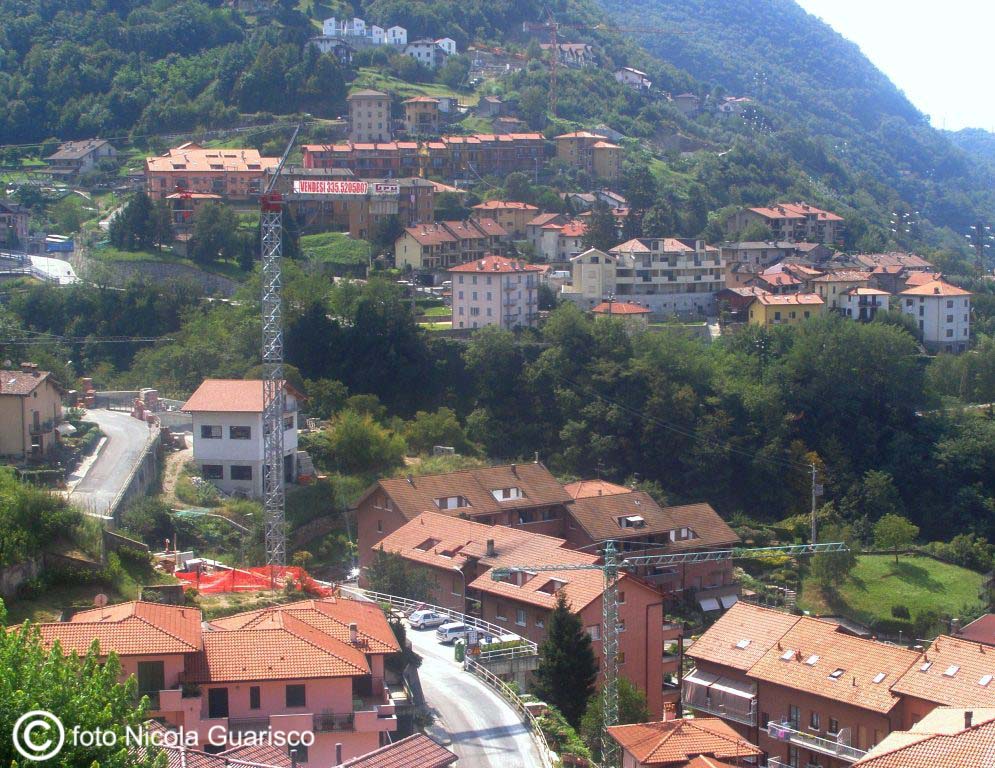 |
19) Bellano: the devastating effect of the new buildings on the villages above. |
|
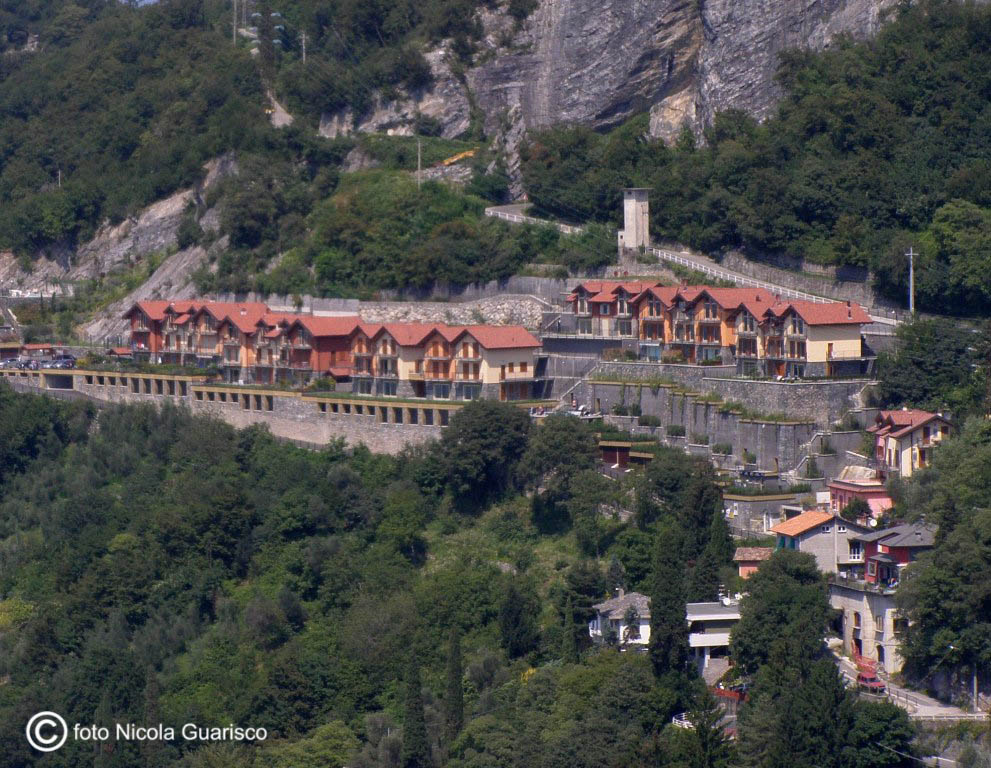 |
20) When seen from a distance, this complex, which seems to have appeared out of nowhere, slightly resembles a town. It is situated in Varenna close to the medieval hamlet of Vezio. |
|
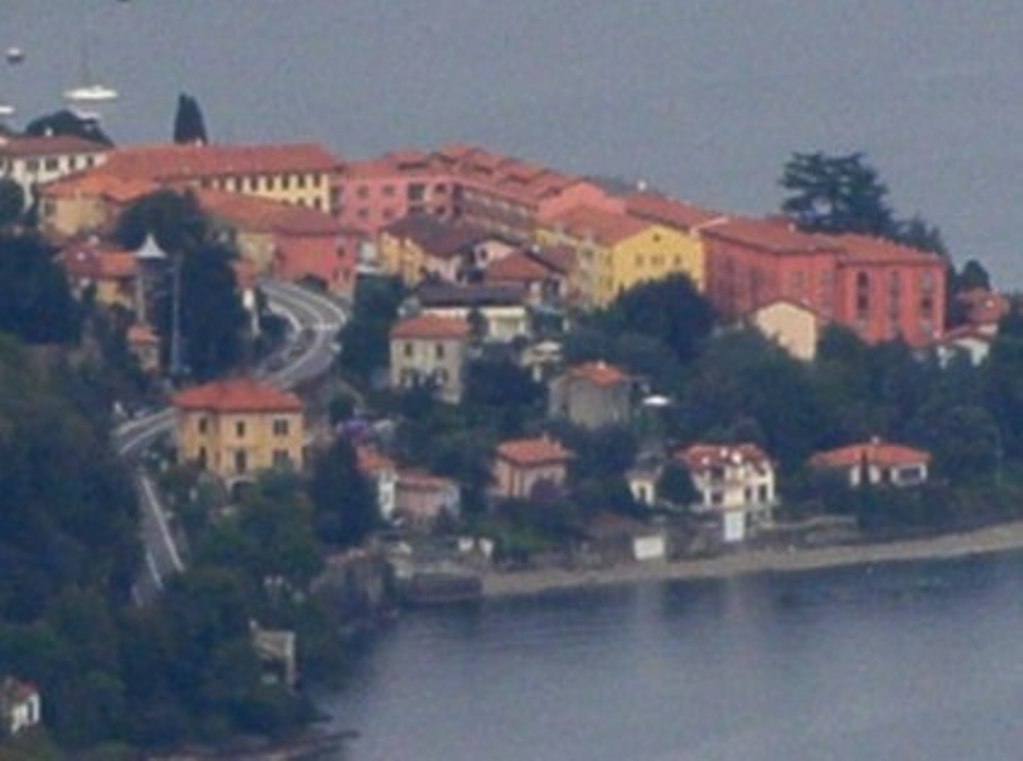 |
21) The bad quality of this photo is directly proportional to the terrific eyesore in question: the "eco-monster" of Acquaseria, already in the forefront of the national public opinion due to the building company bankruptcy and consequent interruption of the works. A heap of unfinished edifices that clutter the Lario lakeside, worthy of the suburbs of Milan. |
|
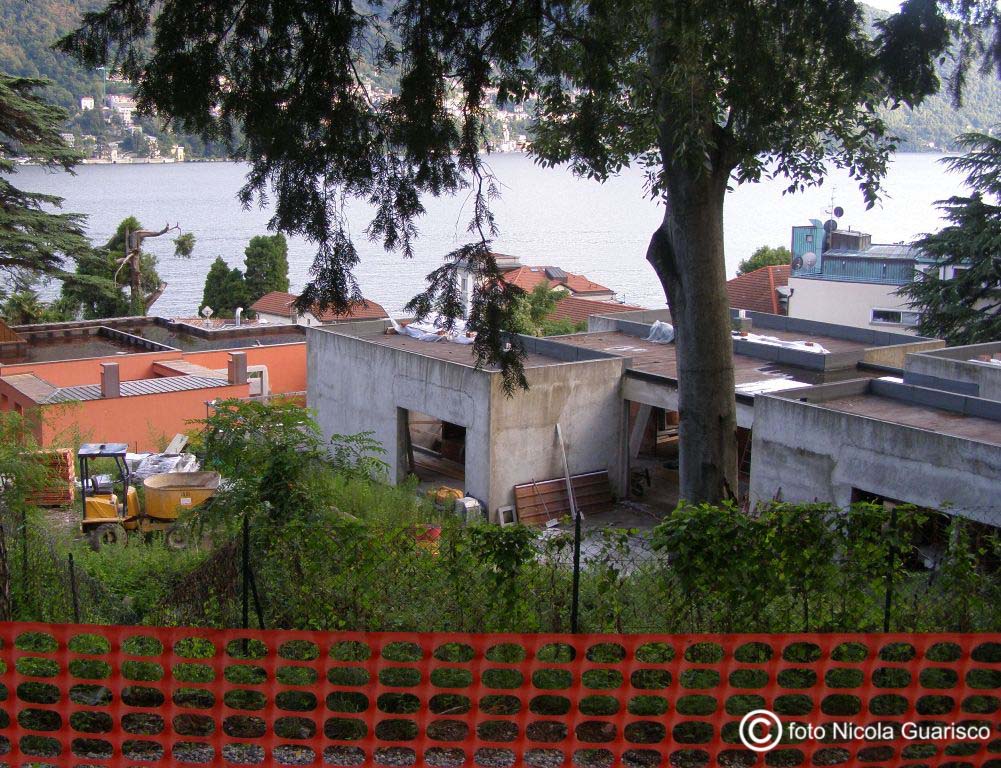 |
22) Moltrasio, the park of Villa Hocevar. |
|
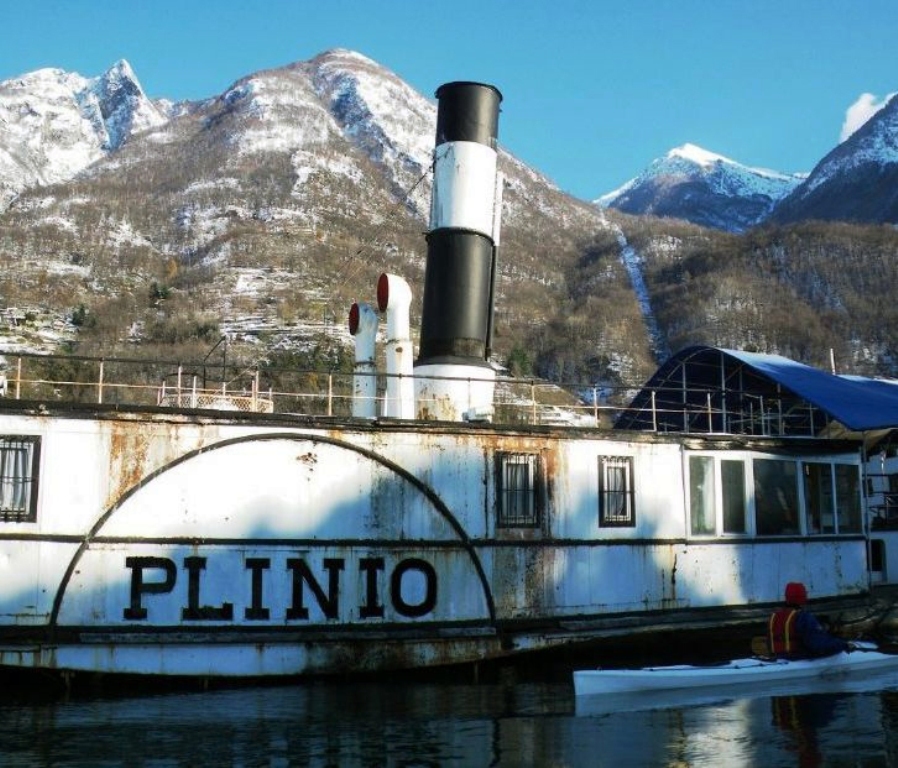 |
23) The old steamer Plinio, abandoned on the small lake of Mezzola, had been waiting for years to be restored as a floating museum (it was the oldest paddle steamer in Italy). It sank in 2010 due to the shameful indifference of the local administrators. This striking picture was taken just five days before it went down (photo by Marco Ferrario). |
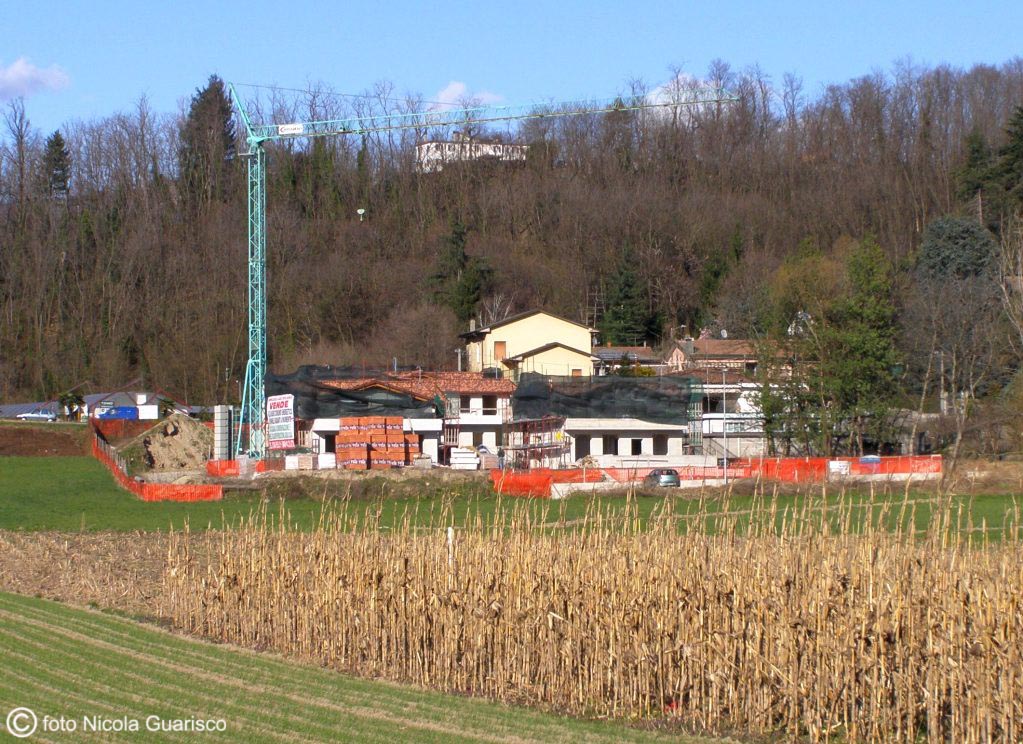 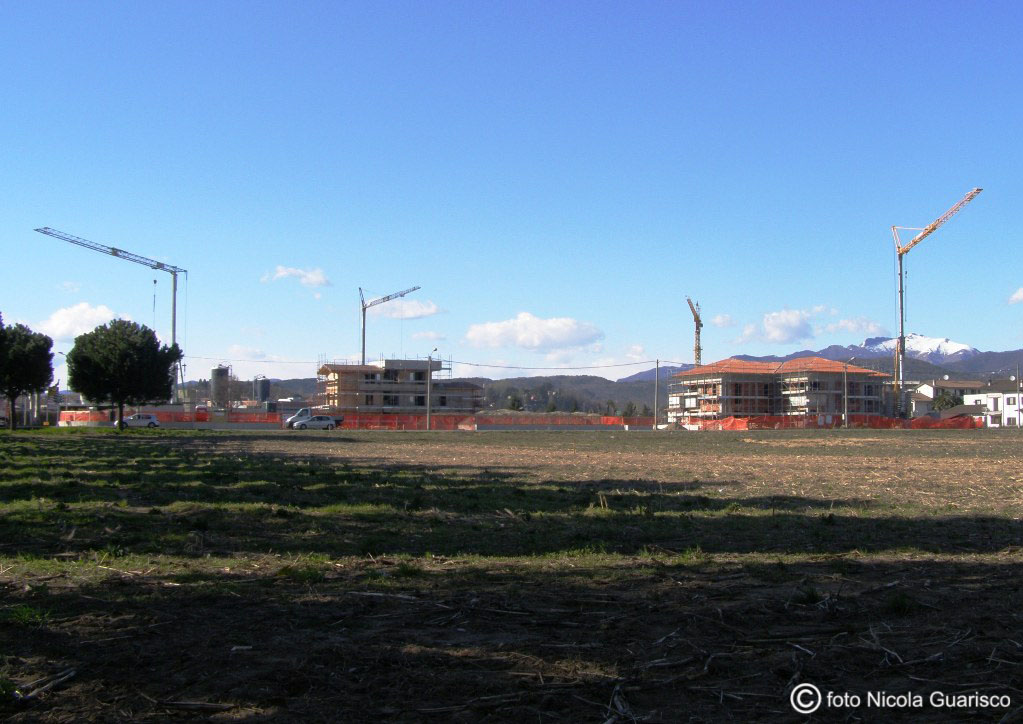
| 24) Grandate, south of Como: settlements that are literally “devouring green lands”, in Prato Pagano. It is a very serious matter as these are the last plots of green land left. Everyone knows that space does not increase in proportion with built areas; but perhaps these clever town planners are not aware that the saturation point has been reached already. |
|
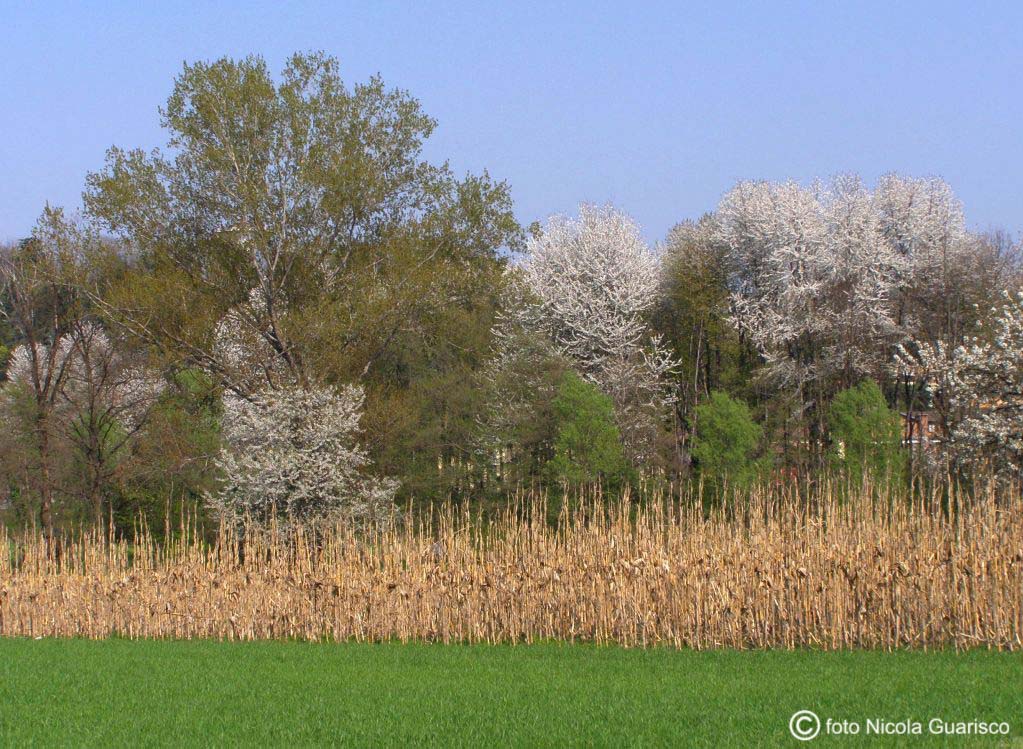 |
25) Grandate is undergoing a reckless overbuilding thanks to a well-known construction company. The lawn once looked like this... |
|
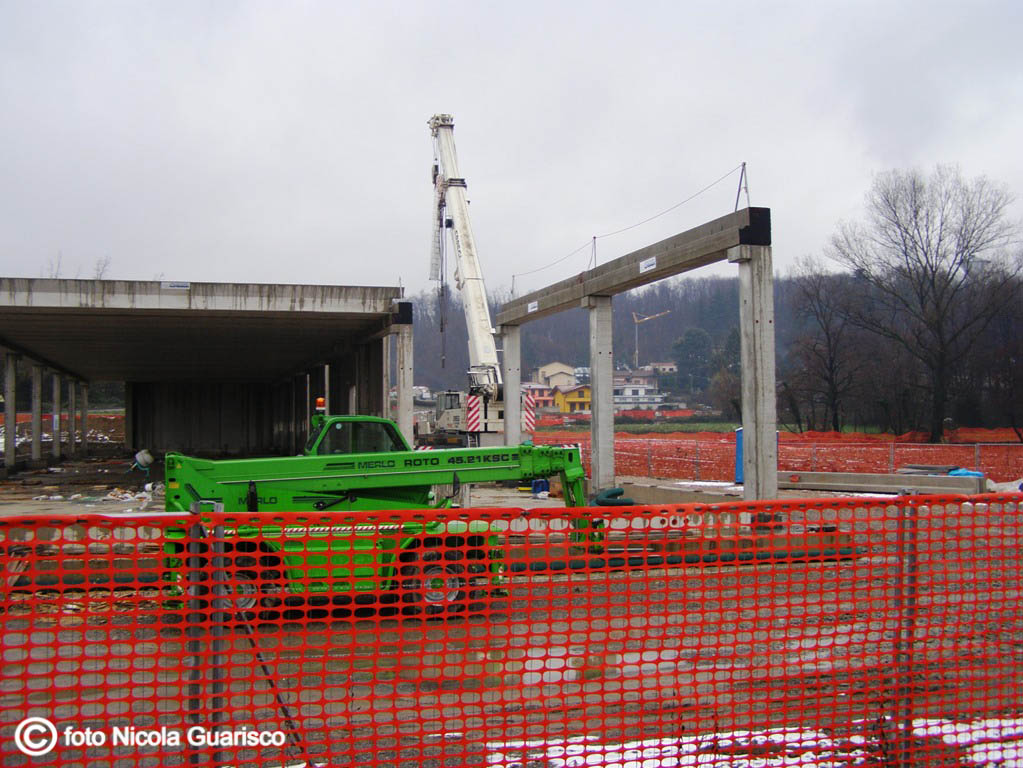 |
...now it is like that. Let’s give way to the upteenth commercial business district! |
|
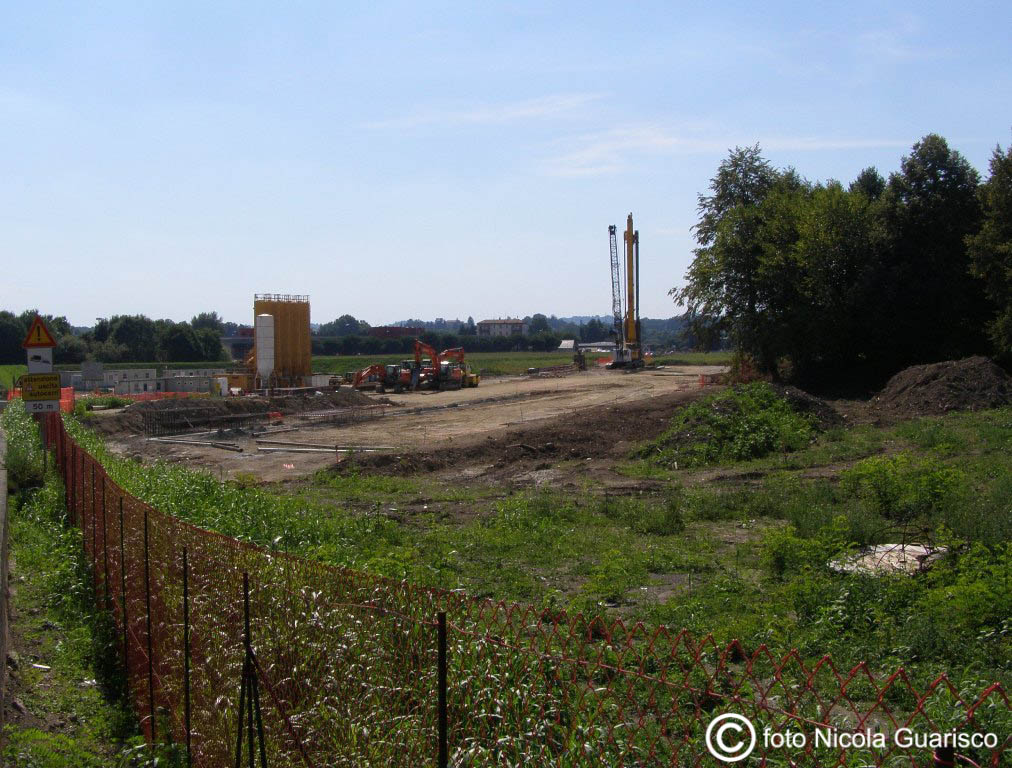 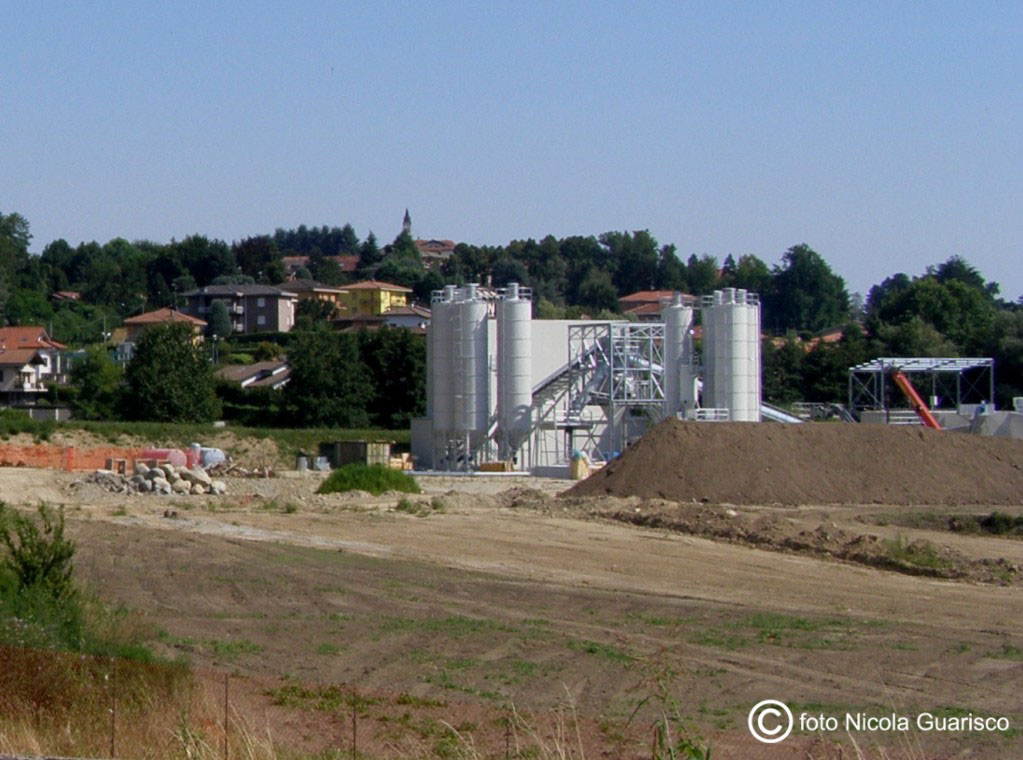 |
26) Grandate is also affected by the works of the new Pedemontana highway. In the space of one year, from 2010 to 2011, the preexisting lawns completely disappeared. The wealthy Lombardy region builds skyscrapers in Milan, but the solution to bury the streets inside the gallery is deemed too expensive. What remains of the martyred Brianza is about to be devoured piece by piece. |
|
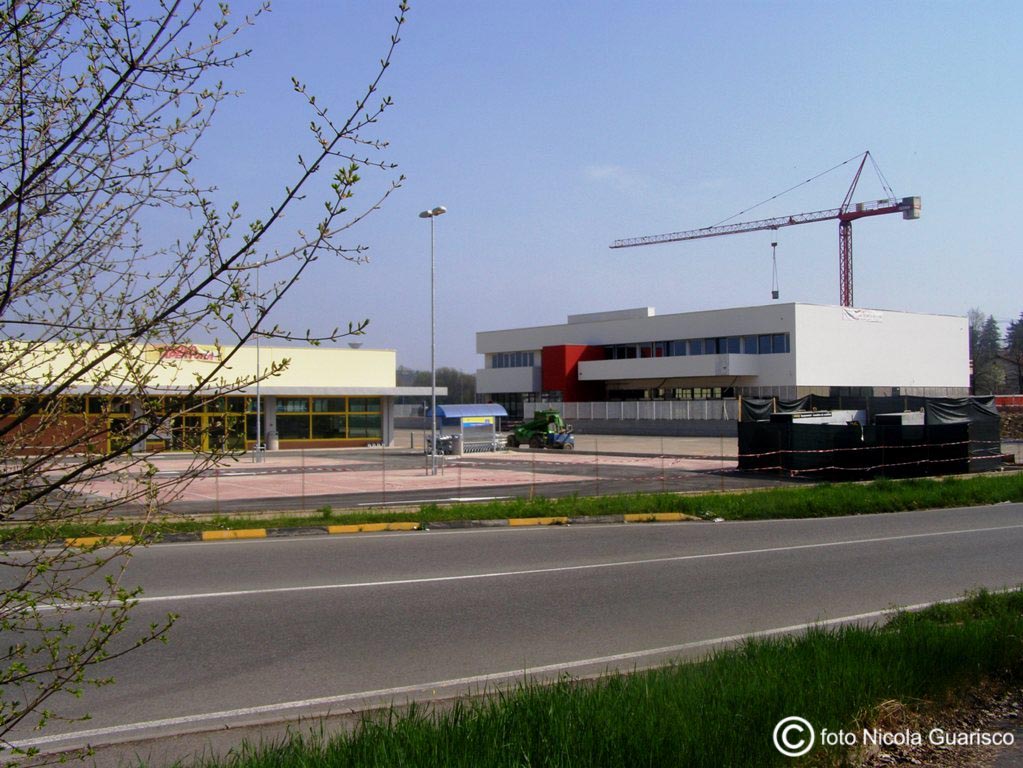 |
27) Fino Mornasco, South Como: new shopping centres and new commercial buildings a few hundred meters from other shopping malls and other warehouses.
|
|
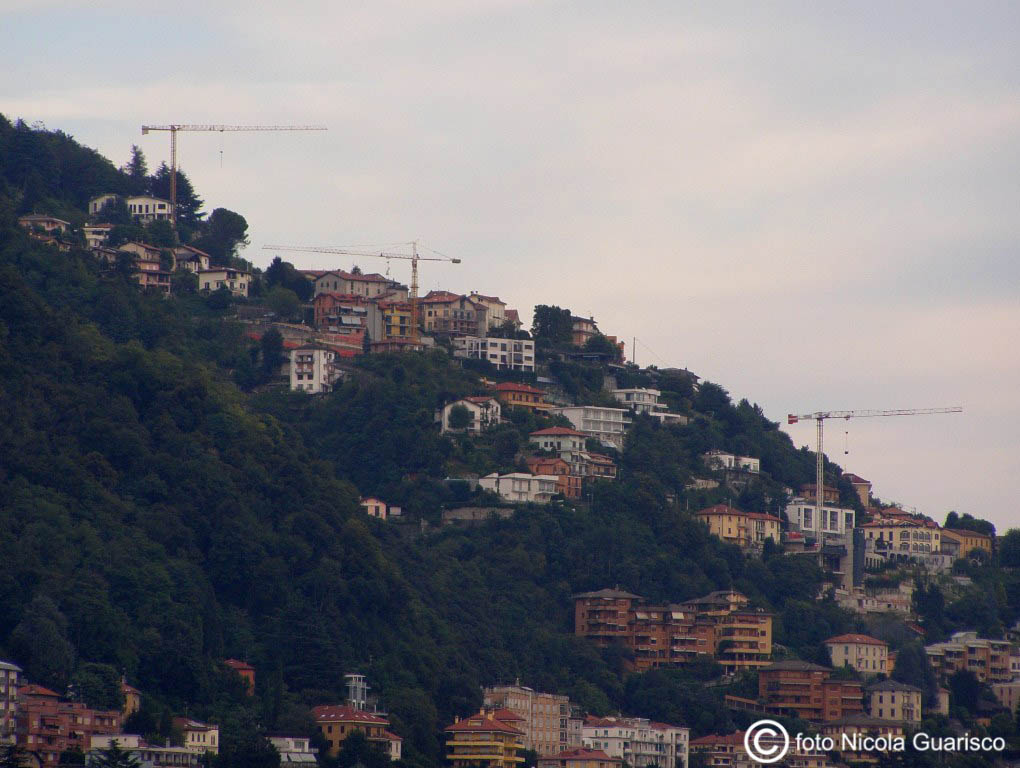 |
28) Garzola, East Como: half the houses shown in this picture have been built over recent years and are now clouding over the panoramic view along the road to Brunate.
|


